Jean Turner | August 22, 2017
Top Of The World Land Speed Trial
Four incredible tales of a land-speed racing adventure in Bolivia
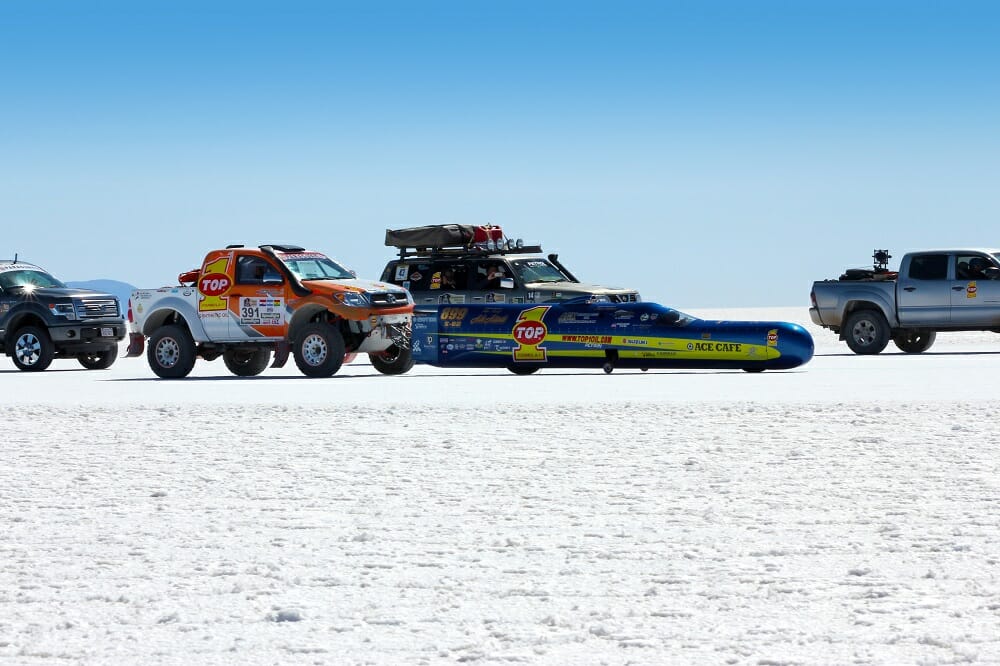 The Top 1 Ack Attack gets a push-start down the track at the Top of the World Land Speed Trial.
The Top 1 Ack Attack gets a push-start down the track at the Top of the World Land Speed Trial.
Mike Akatiff and Rocky Robinson sat stunned before a stage of Bolivian dignitaries, including the president himself, Evo Morales. Multiple film crews including National Geographic and countless South American news organizations muscled for space before him and his crew, the Top 1 Ack Attack team, all trying to get shots of the fabled Americans who had made the 5000-mile trek to Uyuni, Bolivia to race on the biggest salt flat in the world. Bolivian pageantry unfolded all around them in honor of the Top of the World Land Speed Trial, a colorful kickoff for Bolivian Independence Day weekend on an otherwise bleached landscape. The steady beat of drums matched the folk dancing of young performers, adorned in the traditional bright colors of their country, while Morales and his Bolivian ministers looked on.
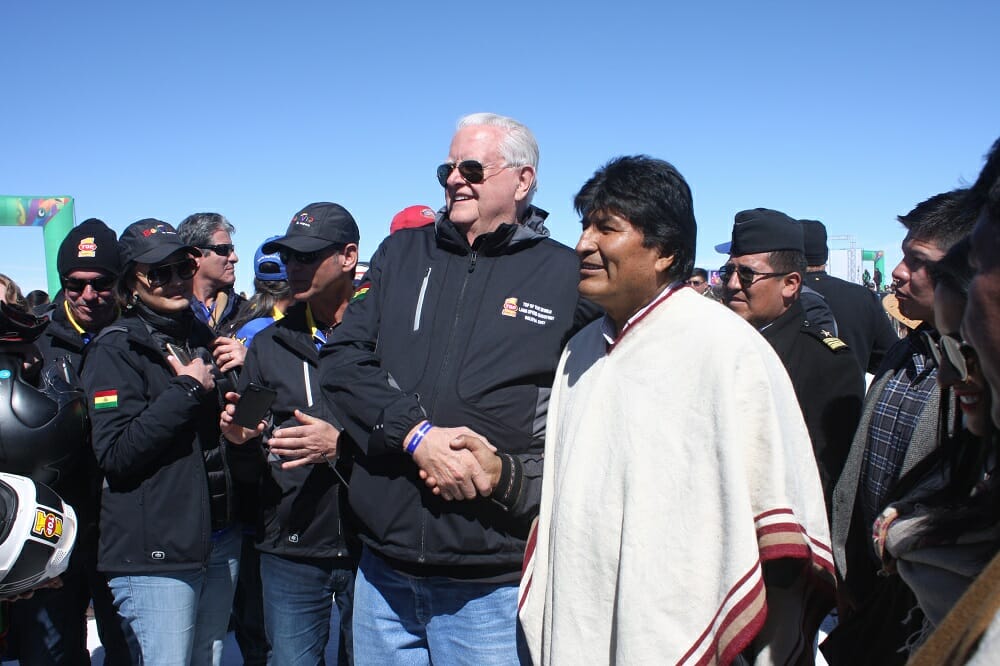 Mike Akatiff shakes hands with Bolivian President Evo Morales.
Mike Akatiff shakes hands with Bolivian President Evo Morales.
“I’m just speechless,” said Akatiff. “I had no idea. We were going to come over here, build a racetrack and figured it’d just be us and a few people [laughs] and we’d set the record. It’s just like…what is this? Thousands of people! I’m just speechless.”
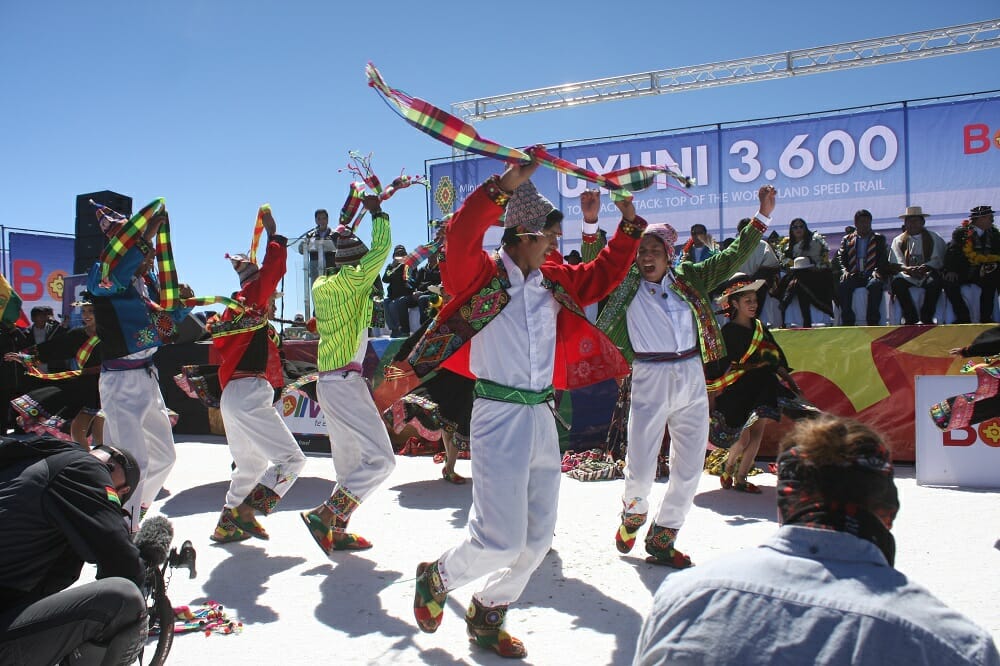 The Bolivians hosted quite a spectacle on the salt in honor of the Top of the World Land Speed Trial.
The Bolivians hosted quite a spectacle on the salt in honor of the Top of the World Land Speed Trial.
Not much on this trip had exactly gone as expected so far, nor would it. Two days into the five-day event, there was one big problem: the Ack Attack had yet to arrive. Issues with shipping, customs and border crossings had the Ack Attack streamliner held up while the clock was ticking. The perfect salt that they had traveled to this foreign land to find was stretched out before them—a platinum threshold to the 400-mph barrier begging to be crossed—but already there were new challenges facing the team. The remote location, the 12,000-foot altitude, cold temperatures and limited daylight would plague their three precious remaining days on the Salar de Uyuni, which would end without the team achieving a new world-record run.
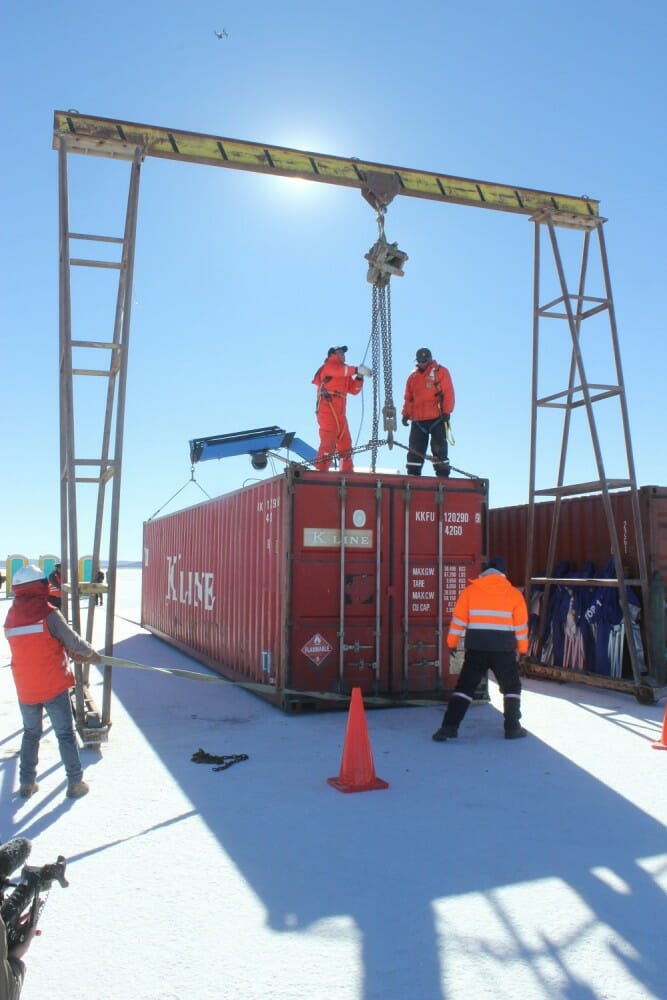 At long last, the Ack Attack container sets down on the Salar de Uyuni.
At long last, the Ack Attack container sets down on the Salar de Uyuni.
While the “salt gremlins” prevented the Ack Attack from breaking the 400-mph barrier, the three other teams that accompanied Akatiff to the Top of the World Land Speed Trial each make their marks in the world record books, bringing an air of gratification to the pioneering effort—the first-ever world land-speed event in South America.
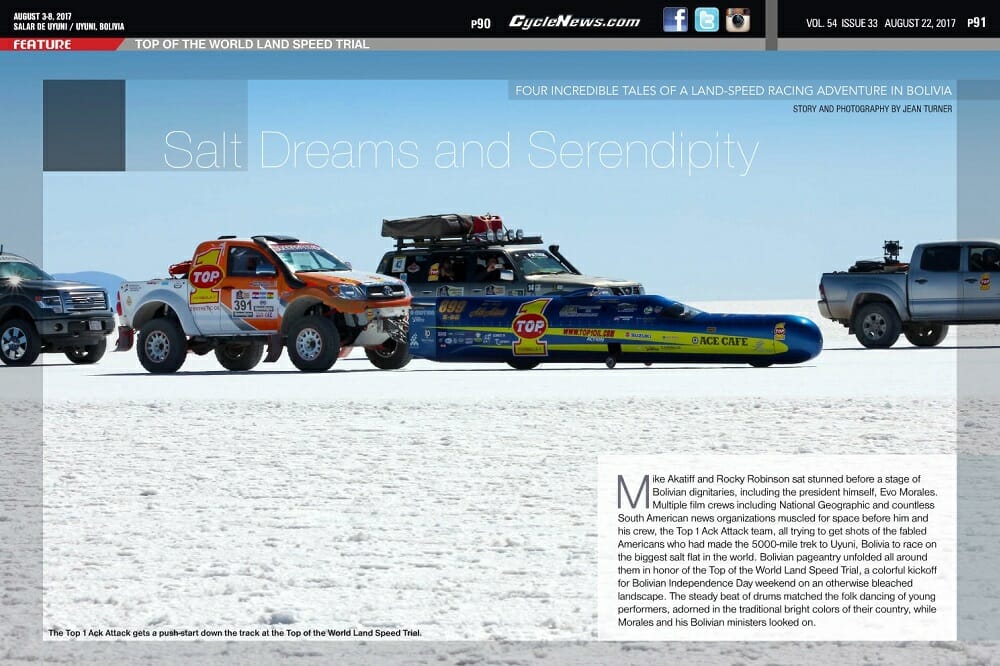
Click here to read this in the Cycle News Digital Edition Magazine.
Story and Photography by Jean Turner
ACK ATTACK
Late Friday night, the lights of a big rig lumbering down the dirt road toward the Palacio de Sal hotel was a welcome sight for Akatiff. His container had finally made it off the ship, through customs, over the Andes and across the Chilean border into Bolivia. Now was when the true race began as the team rushed to get the Ack Attack to the salt and ready to run.
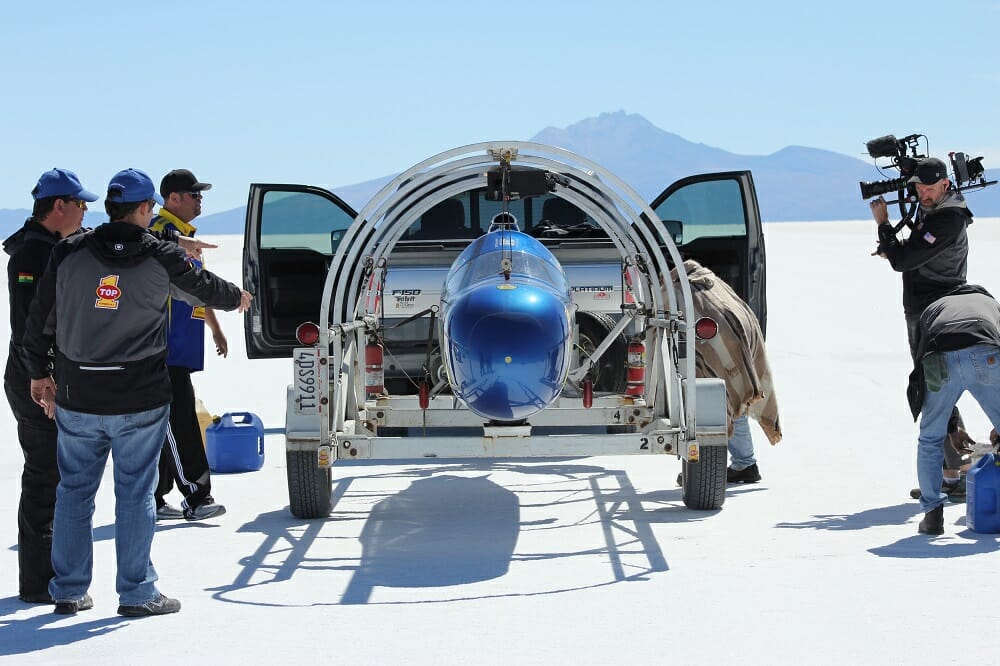 Preparing for launch, the Ack Attack gets into position.
Preparing for launch, the Ack Attack gets into position.
Immediately the team began experiencing problems with the streamliner, problems that didn’t exist when it was loaded into the container.
“The brakes worked fine when we left San Jose, we got here it had no brakes,” said Akatiff. “And nobody touched the brakes—nobody did anything. So we don’t know what happened there.”
Along with troubleshooting and prepping the bike, the team had to work through altitude tuning, as was expected. Another new aspect on the Ack Attack was the addition of the rear doors. Two electronically controlled rear doors that come to a point at the rear of the streamliner showed a significant improvement in aerodynamics in the wind tunnel, but how it would handle at speed remained to be seen.
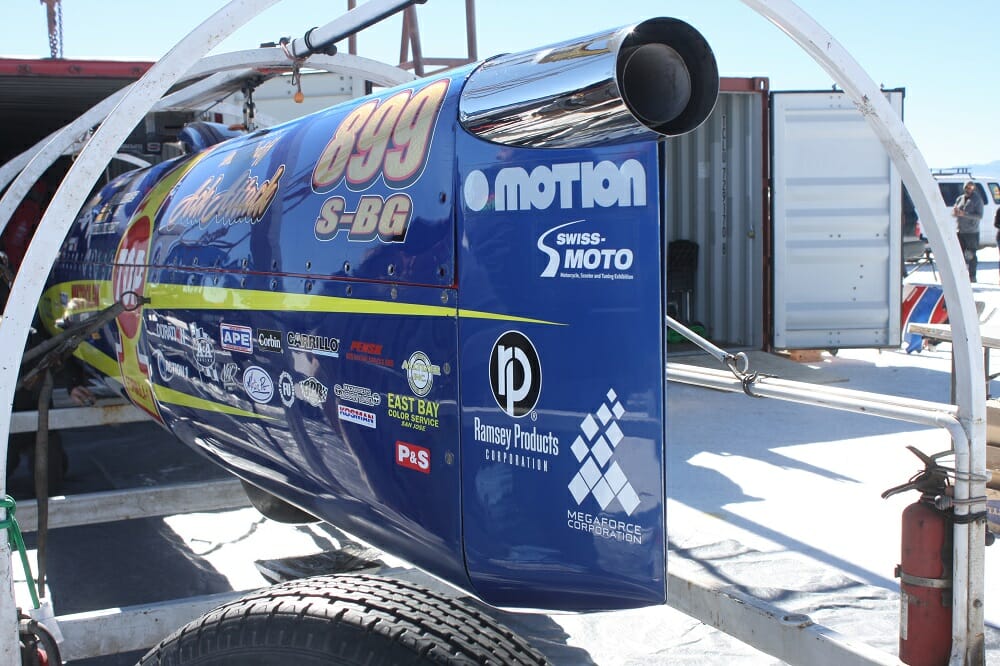 This marked the first time the Ack Attack ran with its rear doors in place—a significant improvement in aerodynamics.
This marked the first time the Ack Attack ran with its rear doors in place—a significant improvement in aerodynamics.
Sunday morning Rocky Robinson was ready for his shakedown run in the Ack Attack. The team got a couple of runs in throughout the day, and worked through setup issues, but not without an incident that left the liner on its side.
“We made this last pass—the bike ran a lot better. We got up to about 358 top speed,” Robinson explained. “We had a little issue at the end of the run; my landing gear didn’t come down all the way. We had a little problem with the battery. I knew they weren’t all the way out so I rode it all the way to the pits hoping someone maybe would catch me. And they didn’t! They stand clear and I stopped right there and then I just tipped over.”
Fortunately the Ack Attack wasn’t damaged in the tip-over, and a fresh battery solved the landing gear problem. Robinson also found the addition of the rear doors to be quite effective—a little too effective. The Ack Attack was so slippery through the air it lost some stability, but fortunately it was countered by the great traction on the salt.
With Saturday gone to setup and troubleshooting and Sunday now gone to shakedown runs, it all came down to Monday, August 7, the final day of the meet. As course creator Mike Cook explained, he and his team didn’t have the option to stay longer to give the Ack Attack another day, as they had to head straight from Bolivia to Bonneville for SCTA Speed Week the next day.
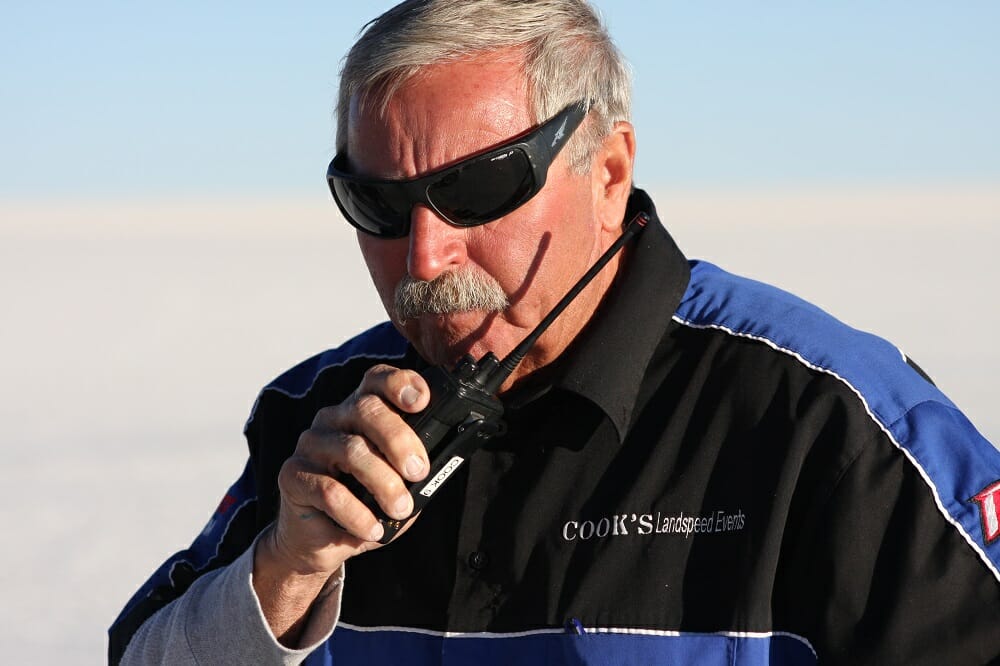 Mike Cook a fixture in Bonneville land-speed racing, was tasked with laying out the track and managing activity at the Top of the World Land Speed Trial.
Mike Cook a fixture in Bonneville land-speed racing, was tasked with laying out the track and managing activity at the Top of the World Land Speed Trial.
“Tuesday evening, we got to be outta here,” Cook said. “I have to go to Bonneville Salt Flats, and the Rice brothers [timing officials in Bolivia] do the timing there. I wish the containers would have been here earlier. But it’s out of our control. We’ve come to a foreign country. It’s been challenging, you might say.”
Taking it all down to the last day isn’t new to the Akatiff team. In fact, it’s come to be a signature of the Ack Attack. Their existing world record, 376.4 mph set in 2010, came down to the wire, as Akatiff recalls.
“That day, that whole week, nothing worked for us until the last 45 minutes of the last possible time we could run, and we were able to get that record. I was thinking déjà vu here.”
But more struggles were to come for the team, this time during a run that reached 378 mph as the Ack approached the speed trap. With the twin Hayabusa engines at full tilt and gaining speed, the streamliner instantly lost power. Both motors quit and Robinson coasted through the timed mile at 338 mph. Robinson elected to do as he had done before and coast it all the way into the pits in order to save valuable time in trailering the streamliner back. But a problem arose when he found himself heading too fast into the pits. Without much air pressure to slow him down, even the parachute did surprisingly little.
Rocky blew past the pits and off the groomed track into the rough popcorn-like salt. Worse yet, he was forced to cook the brakes as he finally came to a stop over a mile further than intended.
The ‘liner glided to a halt safely, wheels out this time to prevent it from tipping over. The team rushed to his aid, immediately removing the bodywork to take a look at the engines. They assumed that one or both were busted, signaling an end to their effort.
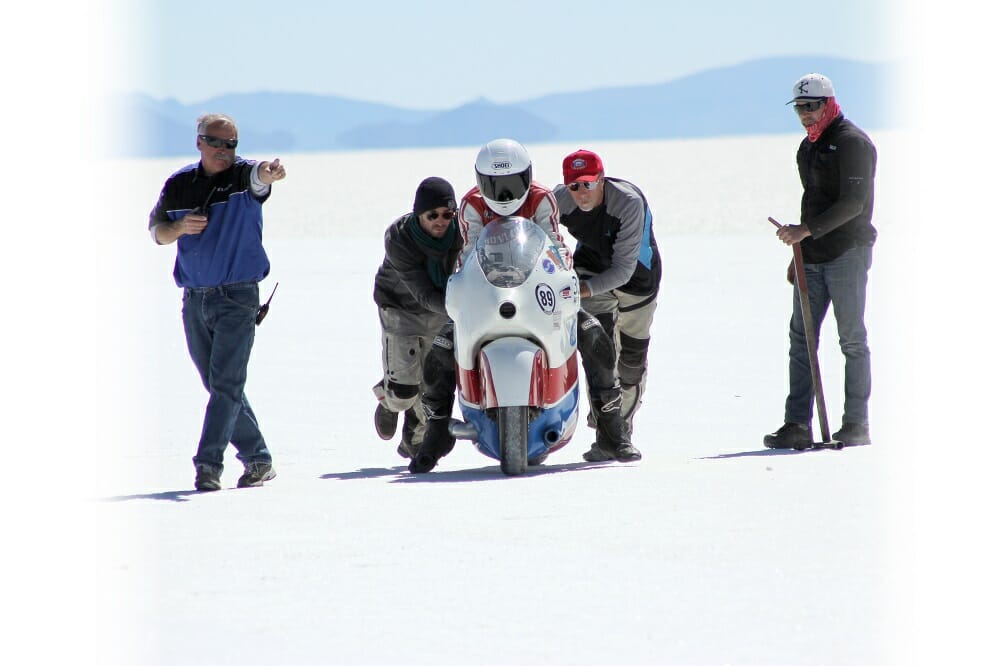 Mike Cook shows the way as Ralph Hudson gets a push start.
Mike Cook shows the way as Ralph Hudson gets a push start.
“Right there,” push-car driver Beto Recalde pointed to a loose hose that popped off the turbo manifold. An easy fix.
“Let’s see if it’ll start up,” Akatiff said. With a flick of a switch, the twin Hayabusa engines roared the life. Brief cheers erupted from the team as they simultaneously sprang into action. They had work to do if they were going to beat the daylight.
“I thought the motors had probably blown,” Akatiff said. “The turbo hose blew off. We went from 30 pounds boost to zero boost at 12,000 feet, so we had no power. We’re still in the game. That’s the important part. And it’s still early.”
The midday hour left time for some sizeable repairs, including replacing the brakes that had been roached. Akatiff shouted orders in the pits, anxiously trying to locate the needed parts. Unlike Bonneville with a major U.S. city nearby, there are no such options in Uyuni. If you didn’t bring it there, you won’t find it there. Whispers in the pits drew comparisons to the movie Apollo 13. The Salar de Uyuni might as well be the surface of the moon, without so much as a stick or a rock to use as a tool. But failure was simply not an option.
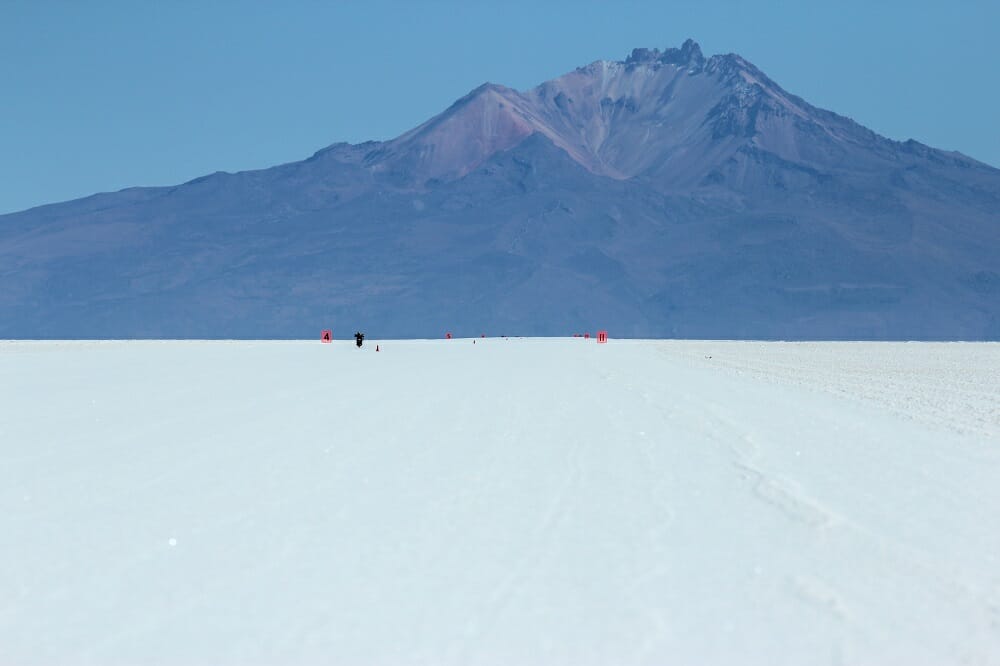 Vulcan Tunupa is a popular landmark on the Salar de Uyuni. Mike Cook designed the track to give racers a clear focal point. Aim for the volcano and twist it!
Vulcan Tunupa is a popular landmark on the Salar de Uyuni. Mike Cook designed the track to give racers a clear focal point. Aim for the volcano and twist it!
At long last, and with little more than two hours of daylight remaining (just enough for a turnaround run), the Ack Attack once again headed down the course to Mile 15. This would be their last shot at a new world record. But this was the Hail Mary that the team is notorious for. It just had to work.
“We’re moving,” came Mike Cook’s voice over the radio.
Watching from the tower at the timed mile (between Miles 7 and 8), there was nothing but the sound of salt crunching beneath shuffling feet, and the soft beeping of cameras preparing to focus until the Ack Attack finally came howling onto the horizon.
“Mile 12,” the radio crackled.
A white blur was barely visible on the horizon, the rooster tail of salt coming from the Ack.
“Mile 11…”
A distant shimmering image of the Ack emerged on the horizon.
“Mile 10.”
“Oh no,” Akatiff’s wife Kristy softly muttered. “That’s too long between miles.”
Speed seemed to pick up slightly between miles 10 and 9, but just as the Ack broke into the trap, the chute deployed. Robinson aborted the run.
It was over.
The turbo hoses gave out again, this time in a different place, evidence that the turbo was simply creating too much pressure in the thin air.
“I had a real good ball of steam going and about three or four miles into it I smelled something,” Robinson said. “I didn’t know what it was and then all of a sudden it lost power just like the time before. And we blew another part of the turbo off, a rubber connector, and it wasn’t the same one.
“At first we thought that was something else fixable but then we found the tire was shredded on the right side. I’m not sure if that was from the turbo hose coming off, or it might have been the chain. But that was the undoing because that’s not something we can fix in time to go again.”
Upon seeing the second turbo failure, Akatiff began calculating barometric figures in his head.
“The difference is we’re at 20 inches of mercury here. And at sea level you’re at 15. Bonneville you’re about 18. That makes a lot of difference. You got all that boost and no atmospheric pressure outside. It’s just, nothing we would have thought about. The next guy that tries this will learn from us.
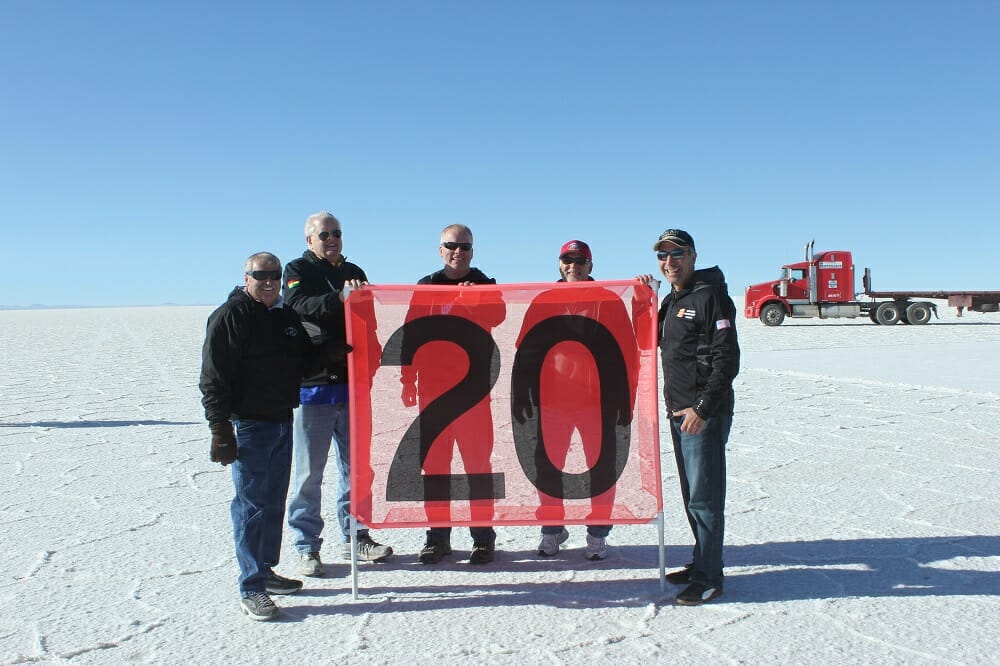 There has never been a need for a Mile 20 marker at Bonneville. Mike Cook was proud to pull this out in Bolivia.
There has never been a need for a Mile 20 marker at Bonneville. Mike Cook was proud to pull this out in Bolivia.
“We’re very disappointed, of course. We weren’t able to set a record here, go over 400. But we gave it our best shot and this is not an easy thing to do. We still hold the record; we can say that. But this was just not our time.”
At the end of a long and frustrating week, the missed opportunity did not sit well with the Akatiff team, but as they know all too well, when you’re speeding into uncharted territory, you can’t always predict what will happen.
“At Bonneville, everyone says it’s the Bonneville curse. Well I think there’s a Bolivian curse here too. Because we had odd things happen on the bike that just didn’t make any sense. I can say this, if anybody beats that record, I take my hat off to them because it’s a really hard thing to do.”
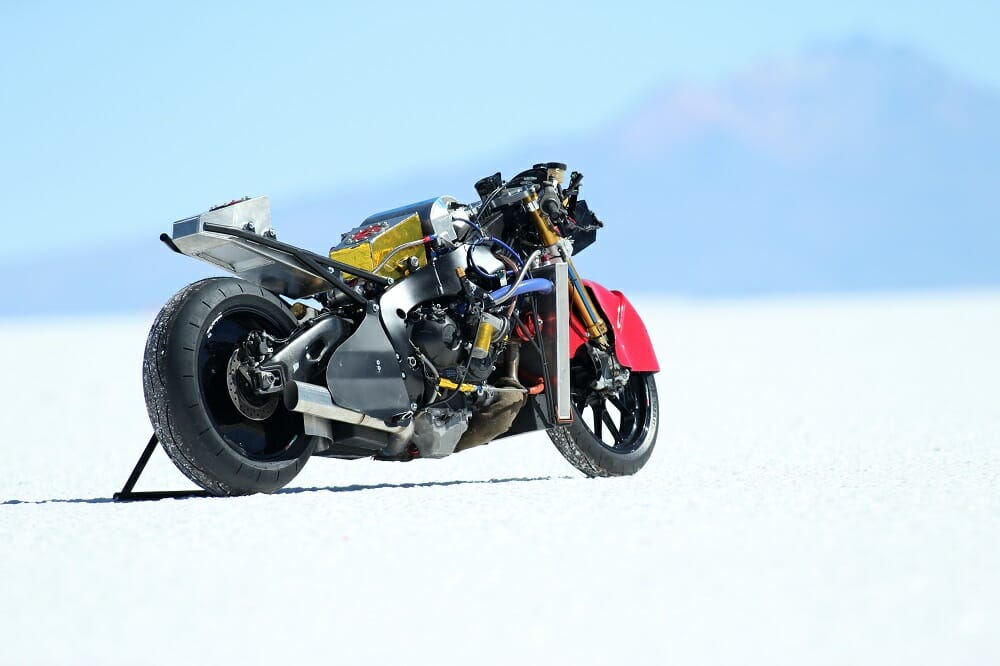 Al Lamb’s Honda CBR1000RR-based land-speed racer undressed.
Al Lamb’s Honda CBR1000RR-based land-speed racer undressed.
THE END?
After all the time and effort and money, what was it all worth? With only minutes to pack up the containers and head to the airport, the ending of the Top of the World Land Speed Trial was abrupt; literally every ounce of daylight had been soaked up by the team’s effort. With the disappearing light and rapidly dropping temperatures, the Salar quickly lets you know when it’s time to go. It didn’t leave much time for reflection on the overall event, and whether the first-ever Bolivian world speed trial will signal a shift in international land-speed racing.
“I really don’t know what’s next,” Robinson said. “I’m going to leave that up to Mike [Akatiff]. My dream was always to get to 400. I really think this is the course to do it on. We only ran for two days. Our bike got here late and yesterday was the first day we ran. Today we thought we were ready and salt gremlins just ate us up. There’s things we didn’t expect. We would have learned a lot from this, anyway.”
Akatiff talked about it being “the end of the line” for the Ack Attack, but quickly added, “Never say never. We’ll see. We’ll go back and think about it.”
Despite the disappointment, one thing is sure, no one left with any regrets about making the trek to Bolivia. It was a pioneering effort that will go down in land-speed racing history.
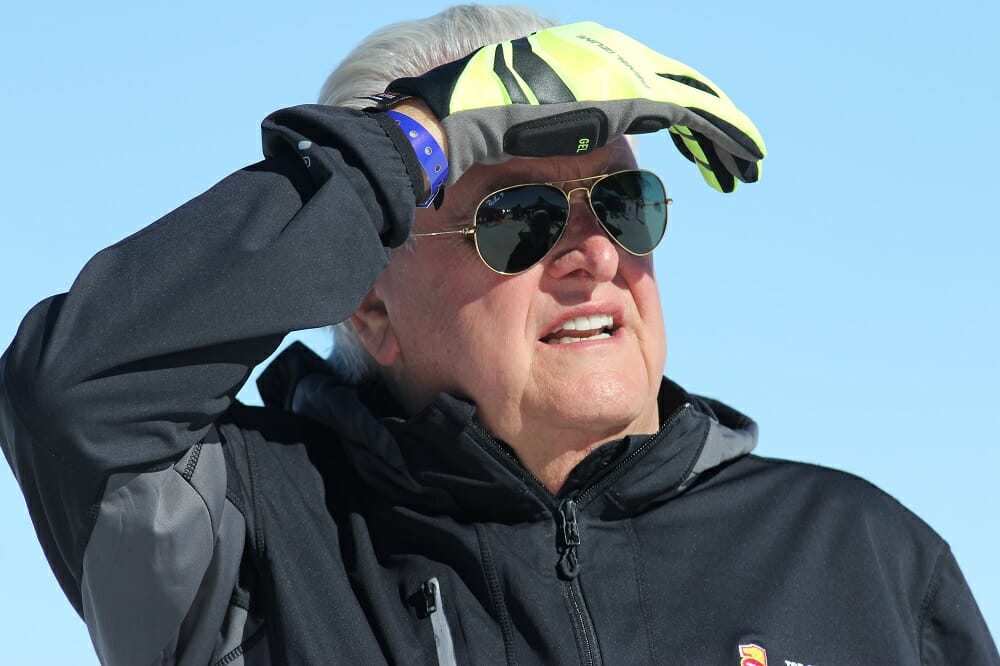 Akatiff wasn’t happy to leave Bolivia without a new world record, but time will tell if the team will be back.
Akatiff wasn’t happy to leave Bolivia without a new world record, but time will tell if the team will be back.
“This is historic,” Akatiff said. “It’s something you’ll never forget. When the president of a country comes out to visit you and shakes your hand and signs your motorcycle? Oh yeah! [laughs] I’m glad I came, absolutely. It was great.”CN
Al Lamb – Chaotic Serendipity
“This was the original container,” Al Lamb said, pulling up a picture on his phone of a 40-foot High Cube container clean enough to be an operating room. In a deep voice with a slight southern drawl the Dallas Honda dealer explained that his container adorned with two land-speed dream machines—twin partially faired turbo-charged Honda CBR1000RR motorcycles—had been unceremoniously downsized to a single bike crate after it failed to ship from Houston. From there it went to Miami to be put on a plane for La Paz, but that also somehow went awry.
On the opening day of the Top of the World Land Speed Trial, Lamb was anxiously awaiting the bike’s arrival at the hotel in Uyuni, but then received word that his crate had been seized by customs, and was still in Miami. After five weeks of trying to ship his materials, the bike hadn’t even left the country—an infuriating reality that left Lamb to consider that his bike might not arrive at all.
Yet a day and a half later, Lamb was uncrating his turbo-charged CBR1000RR on the salt.
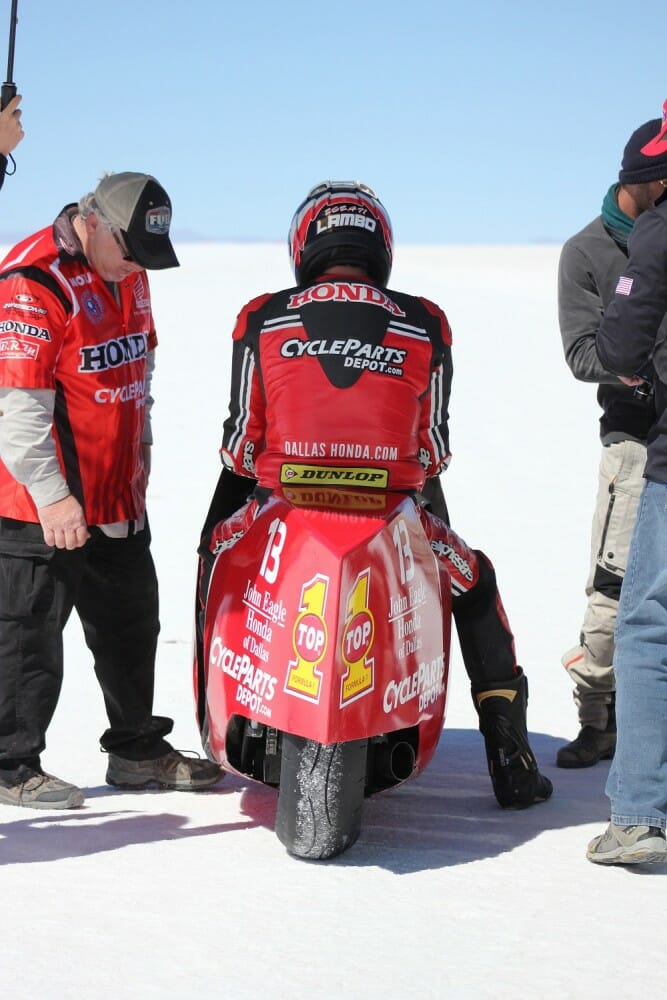 Al Lamb waits for the all clear.
Al Lamb waits for the all clear.
But getting the bike to Uyuni was only the first challenge the Texan would have to face throughout the week. His first run revealed that the bike wasn’t getting any boost, challenging the team to figure out why.
Fortunately renowned engine tuner Scott Horner was along for the Bolivia trip, and offered to take a stab at the problem.
“If we wouldn’t have had Scott here we would have been lost,” Lamb said. “But he finally diagnosed that it was a boost controller.”
Fellow racer Ralph Hudson, who would go on to be Lamb’s direct competition that week, had a spare boost controller and gave it to Lamb.
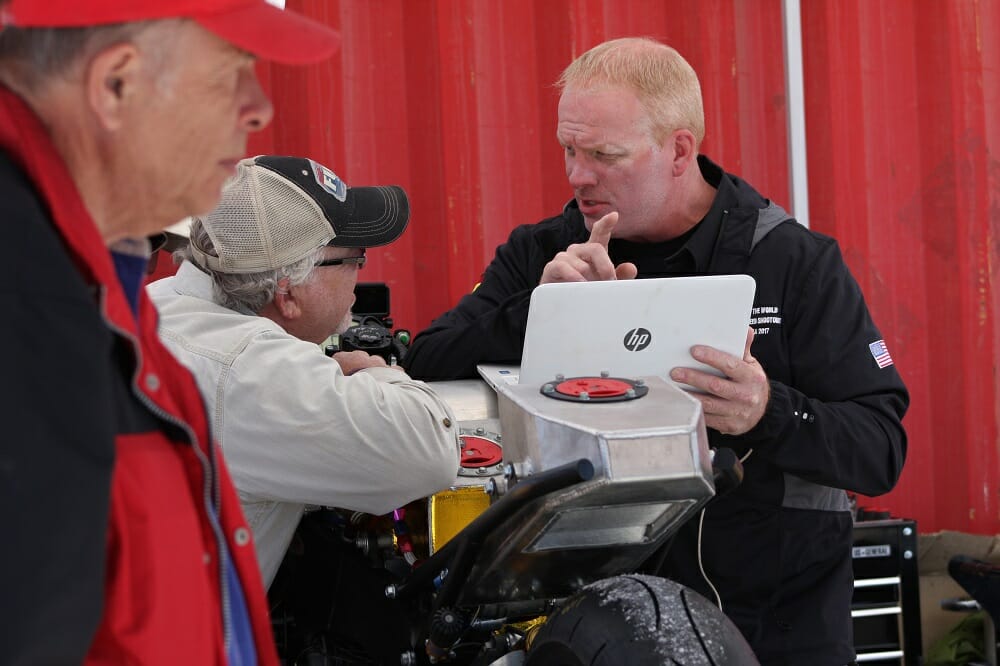 Scott Horner stepped up to help Al Lamb sort out his boost controller.
Scott Horner stepped up to help Al Lamb sort out his boost controller.
“We got one, put it on, and it still didn’t work. But Scott’s the one that figured out that theirs plumbed backwards from ours. Once we turned it around everything worked fine.”
The team seemed on their way at that point, but another complication arose when Lamb’s technician Randy Del Greco suddenly dropped to his knees. Stung by the altitude Randy spent the rest of the day with medics, leaving Lamb’s crew a man down. But through another stroke of fate, help arrived in the form of adventure riding Australians who happened by the event. Mick Essex who was touring South America aboard his BMW GS, was promptly handed a wrench, and jumped in to assist the team.
On Sunday, Lamb made his first run at a record-qualifying speed of 265 mph—enough to qualify for a new world record.
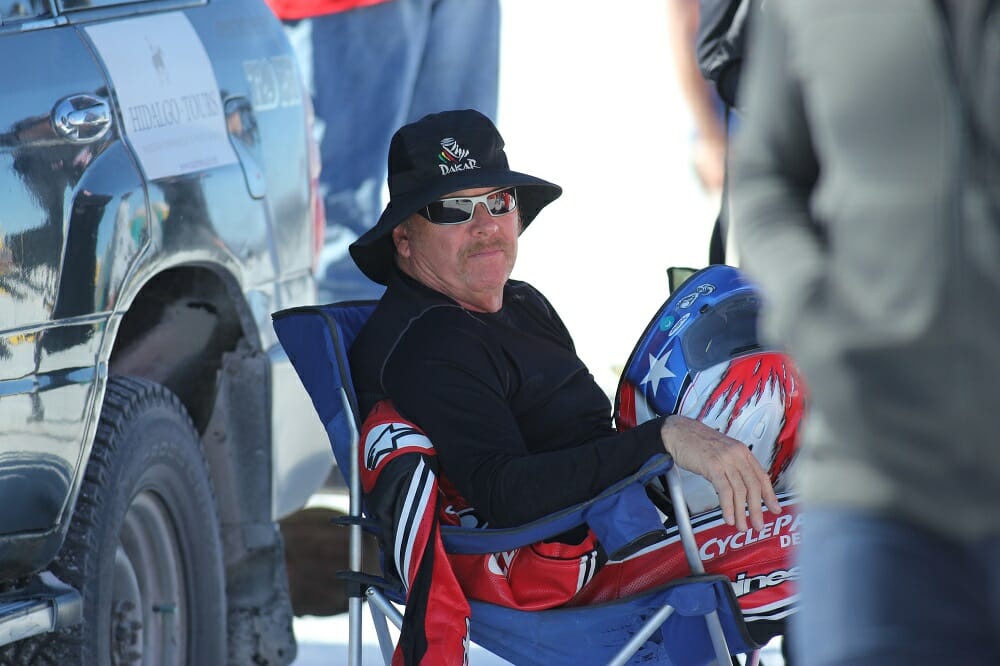 Al Lamb takes a breather before his run.
Al Lamb takes a breather before his run.
“The only issue was about a mile before the measured mile, I knew the tire was coming apart because it was spitting rubber at me,” Lamb explained. “So we had to go back and change a tire in addition to doing the normal turnaround. We did that and we probably rolled off about five minutes before sunset.
“I put tape across the top of my shield thinking that would block the sun out, well it totally blocked my line of sight! I was riding with the shield open; it kept flopping down. I ended up in fifth gear riding with one hand, with my elbow on the intercooler holding the shield up with my thumb, and I thought, ‘Well this probably isn’t good.’ So I just let it go down and rode the measured mile sitting up and we went 266.”
It was enough to set a new world record at 265.849 mph. Against all odds it seemed, Lamb had pulled off the impossible. Lamb and his Dallas Honda crew reveled in the victory that night, even though his record would be broken the next day. But even so, Lamb will always be the first to ever record a world land-speed record in South America.
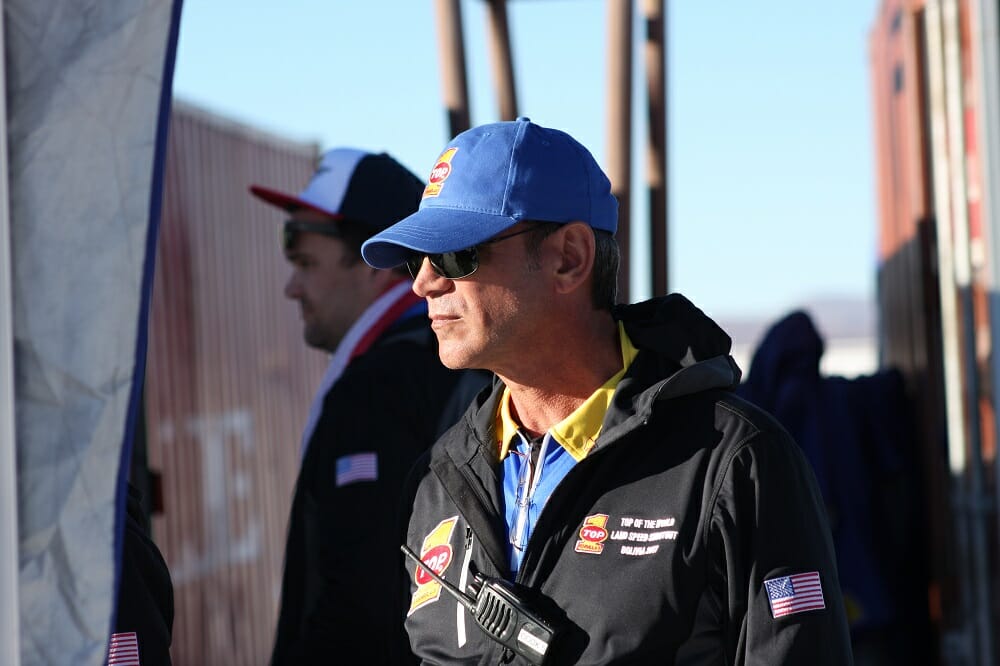 Andre Rodrigues of Brazil was key in instrumenting the first-ever South American world land-speed trial.
Andre Rodrigues of Brazil was key in instrumenting the first-ever South American world land-speed trial.
Ralph Hudson – Never Give Up
Ralph Hudson wasn’t very visible in the pits at the Top of the World Land Speed Trial, as he was toiling in quiet frustration in his container day in and day out. It was Monday, the final day of the event, and Hudson had only made one successful run. It was a stunning one at 274 mph, enough to crush Lamb’s record of 266 mph set on Sunday, but Hudson’s turbo-charged partially streamlined GSX-R1000-powered bike promptly overheated, sending him back to the pits rather than making a return run for the record.
“It has been quite a week,” Hudson said. “The bikes were late. My luggage was late…” But like Lamb’s plight, the arrival of his bike was merely the first of many obstacles to overcome.
“When the bike did get here, it was still early morning and I thought I had drained the water, so I wasn’t worried about things freezing. Unfortunately there was a little water in the waterpump and when I started the bike the first time, it broke the drive shaft to the waterpump. So the bike was overheating. Fortunately I had a spare engine, and we were able to take the part out of that, got it running again, but after having all that apart, I think I didn’t adjust the clutch just right—I was in a hurry—and we burned the clutch up first thing the next day. The clutch debris plugged up the oil filter and the oil pickup screen, so we had to pull the pan off the engine, clean it out, the oil filter, and the next time we started it, clogged again. Had to take it apart again…”
The next day was Sunday, when Hudson made a pass at 274 mph. It was a good sign, but the bike overheated and also developed blisters on the tires, thwarting any hopes of a qualifying turnaround run.
“On Monday we re-geared it,” Hudson explained. “I thought everything was going to be great, and we did a run only 266. It wasn’t faster than the existing record, which Al Lamb set on Sunday, so I was pretty disappointed.”
Monday afternoon turned into a shootout between Lamb and Hudson, with both riders setting qualifying times for a new record.
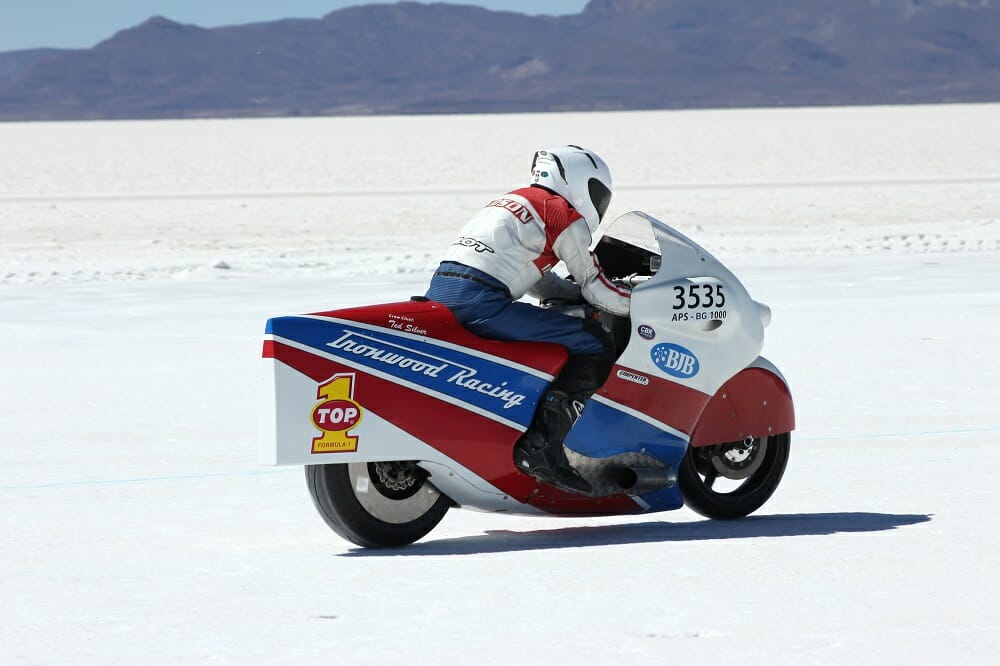 Ralph Hudson makes one of his few runs during the event.
Ralph Hudson makes one of his few runs during the event.
“We made our next run and I was not feeling very hopeful but it turned out to be 281,” Hudson said. “And Al had just run a 285. I had a pretty good run, stayed in it and we actually went 289 on the return. So the average came out to 284 and change. Al’s first run was 285 but his return was 272. So his average was lower. But only by a couple miles an hour. So it was extremely close!”
It marked an exciting finish to the event, and a very sporting competition between two race teams that had been helping each other out all week.
“What a day!” Hudson exclaimed. “Because I started out feeling like, ‘I don’t have a chance.’ And then it’s like, ‘He’s four miles an hour faster…I got some chance.’ Then he made his next run 13 miles an hour slower than his original. It’s like, ‘I’ve got a chance!’ And then my last run was four miles an hour faster than his best run. So, wow! I didn’t think it was going to happen.”
“You just don’t give up.”
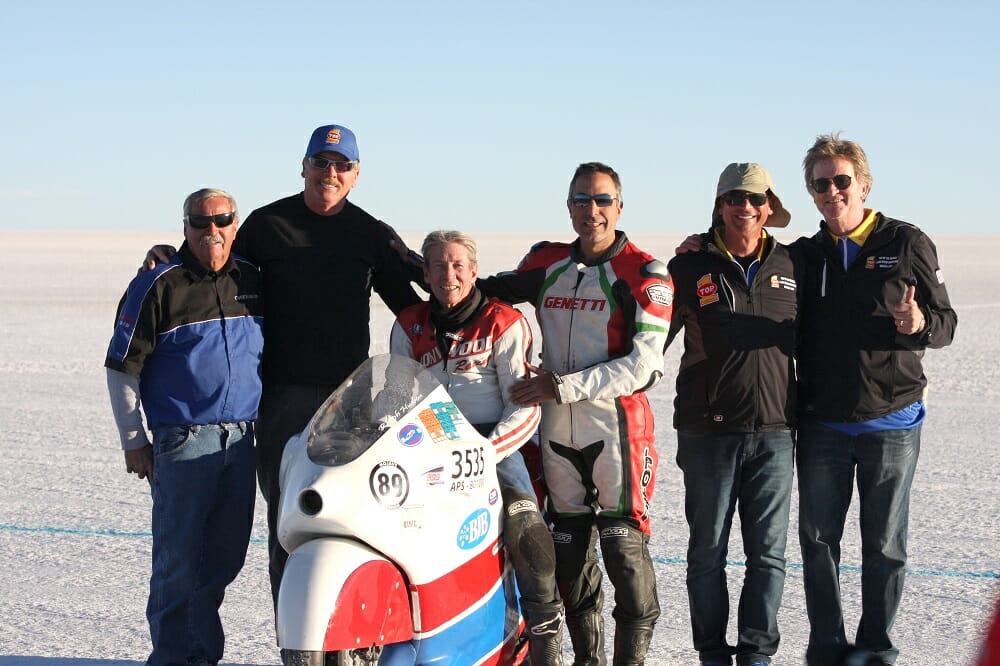 (L-R) Mike Cook and world-record setters Al Lamb, Ralph Hudson and Nick Genet with event facilitator Andre Rodrigues and Top 1 Oil President Joe Ryan.
(L-R) Mike Cook and world-record setters Al Lamb, Ralph Hudson and Nick Genet with event facilitator Andre Rodrigues and Top 1 Oil President Joe Ryan.
Genetti Salembini Racing – Unexpected Heights
Ironically it was the naturally aspirated team that had the least amount of problems in the high altitude of Uyuni. The Aprilia RSV-4 RR of the Genetti Salimbeni Racing team came equipped with nitrous, but they spent a full day running fuel only before hitting the switch.
Nick Genet and Mike Salinbeni (along with Mike’s uncle John Salimbeni) were thrilled to have recorded their fastest-ever times straight out of the box. They recorded speeds in the mid 180s.
“People said we were crazy to bring a naturally aspirated bike up here. They were like, ‘Yeah, have fun going 130 mph,’” Salimbeni said. “Well, we just both hit our personal bests and we haven’t even hooked up the nitrous yet.”
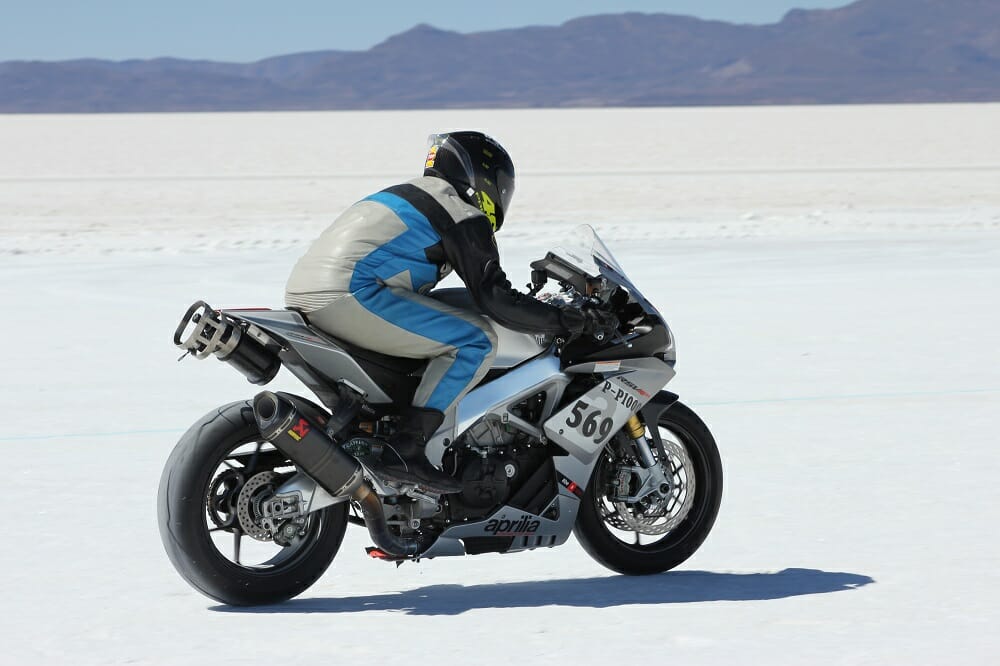 Think a naturally aspirated bike can’t race at 12,000 feet? Mike Salimbeni and his Aprilia beg to differ.
Think a naturally aspirated bike can’t race at 12,000 feet? Mike Salimbeni and his Aprilia beg to differ.
The next day they both joined the 200 mph club, recording speeds of just over 202 mph. The unexpected success got them thinking about their class world record, which was 221 mph—a little beyond their reach. That’s when Nick had an ide—what about the naked (non-faired) 1000cc record?
That night they checked with FIM official Charlie Hennekam about what the standing record was, and if they could qualify for the category by simply removing their fairings. The answer was yes, and the standing record was 189 mph. The next morning, the Aprilia RSV4 got undressed in the chilly morning, ready for her next run. The thin air was to be an advantage this time, with less air pressure to fight. Genet’s opening run was enough to qualify for a return run. His turnaround run with a light tailwind was even better, for an average of 192.8 mph: a new class world record.
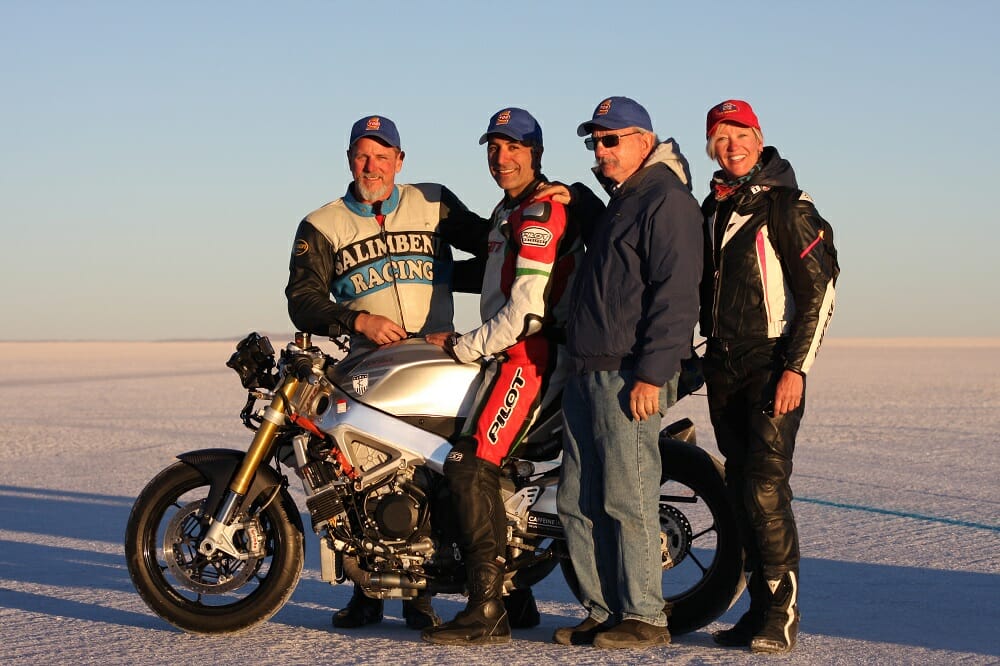 The Genetti Salimbeni team celebrates with Erin Sills (right).
The Genetti Salimbeni team celebrates with Erin Sills (right).
It just so happened that Erin Sills, revered land-speed racer and member of the Bonneville 200 MPH Club, was the first person to greet Genet and inform him of his feat. Emotions ran high not only for Genet and Salimbeni, but for Sills. The record that was just broken belonged to her late husband, Andy Sills.
“We have some emotions running high down here,” came Mike Cook’s voice over the radio, before handing it over to Erin.
“I’d like to congratulate Nick and Mike on an incredible run,” her voice wavering through the static. “But you better believe I’m coming to get that record back.”
Erin Sills now plans to attend the remaining 2017 meets at Bonneville in an effort to put the 1000cc world record back in the Sills name.
“Every land speed racer knows that when they earn a record, it is on-loan and not owned,” said Sills. “How fitting that I was the ‘official’ at the end of the timed mile when Nick broke Andy’s record today. It was emotional for both of us as we hugged, and the baton was passed. I was handing off something Andy was very proud of.
“Maybe I was meant to be in Bolivia to help pass the baton in some way.”
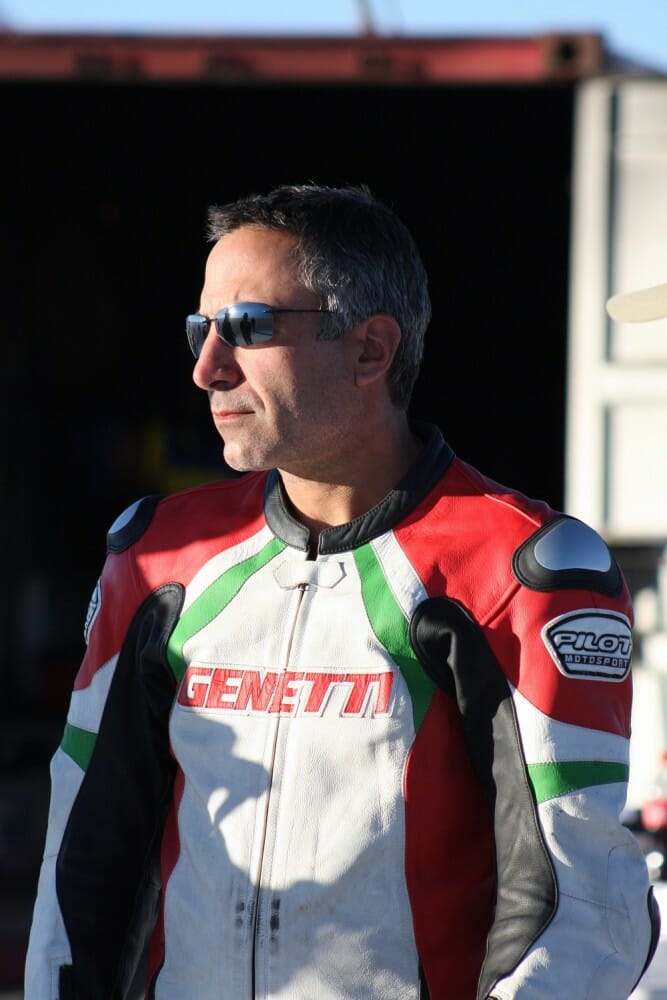 Nick Genet didn’t come to Bolivia expecting a world record, but he got one.
Nick Genet didn’t come to Bolivia expecting a world record, but he got one.